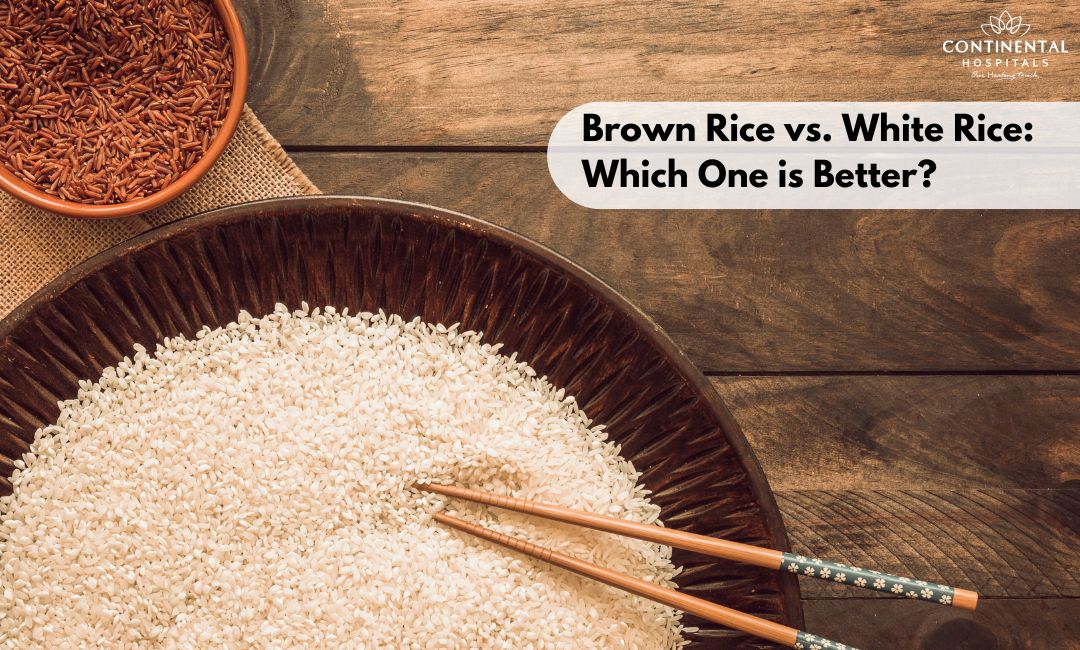Rice is a staple food for billions of people worldwide, and it comes in various types, with brown and white rice being the most common. While both varieties originate from the same grain, they undergo different processing methods, resulting in distinct nutritional profiles and potential health impacts. In this comprehensive comparison, we delve into the differences between brown and white rice, examining their nutritional content, health benefits, and potential drawbacks to determine which one might be better suited for your dietary needs.
Nutritional Content:
Brown rice and white rice differ significantly in their nutritional content due to variations in processing. Brown rice is a whole grain, meaning it contains all parts of the grain — the bran, germ, and endosperm — while white rice is refined, stripped of the bran and germ layers, leaving only the starchy endosperm.
Fiber Content:
- Brown rice is notably higher in fiber compared to white rice. The bran layer of brown rice contains insoluble fiber, which aids in digestion and promotes bowel regularity.
- On the contrary, white rice lacks the bran layer, resulting in significantly lower fiber content. This makes it less effective in promoting digestive health and may lead to constipation if consumed excessively.
Vitamins and Minerals:
- Brown rice is a good source of essential nutrients, including B vitamins such as thiamine, niacin, and vitamin B6, as well as minerals like magnesium, phosphorus, and selenium.
- During the refining process, white rice loses a substantial portion of these vitamins and minerals, making it less nutrient-dense compared to brown rice. Manufacturers often fortify white rice with synthetic vitamins to compensate for the loss, but it still falls short in comparison to its whole-grain counterpart.
🥗 Healthy Plate Challenge
🍽 Add Your Favorite Dish
Pick Your 6 favorite foods, eat, and see the results.Drag & drop foods onto your plate.
Drop Food Here
Glycemic Index:
- The glycemic index (GI) measures how quickly a carbohydrate-containing food raises blood sugar levels. Brown rice has a lower GI compared to white rice, meaning it causes a slower and steadier increase in blood glucose levels.
- White rice has a higher GI due to its refined nature, leading to a rapid spike in blood sugar levels after consumption. This can be problematic for individuals with diabetes or those trying to manage their blood sugar levels.
Health Benefits:
The stark nutritional differences between brown and white rice translate into distinct health benefits associated with each variety.
Brown Rice:
Nutrient Density: Brown rice is a whole grain, meaning it contains all parts of the grain — the bran, germ, and endosperm. This makes it significantly higher in nutrients compared to white rice.
Fiber: Brown rice is a good source of dietary fiber, particularly insoluble fiber. This type of fiber aids in digestion, helps prevent constipation, and may reduce the risk of certain digestive disorders.
Micronutrients: Brown rice contains various essential micronutrients such as magnesium, phosphorus, selenium, manganese, and B vitamins (especially B1, B3, and B6). These nutrients play crucial roles in energy metabolism, bone health, and overall well-being.
Antioxidants: Brown rice contains antioxidants, including phenolic compounds and flavonoids, which help protect cells from damage caused by free radicals and may reduce the risk of chronic diseases such as heart disease and cancer.
Blood Sugar Regulation: Brown rice has a lower glycemic index (GI) compared to white rice, meaning it causes a slower and more gradual increase in blood sugar levels after consumption. This makes it a better option for individuals with diabetes or those aiming to manage their blood sugar levels.
White Rice:
Energy Source: White rice is a good source of carbohydrates, providing quick energy due to its high starch content. This can be beneficial for athletes or individuals with high energy requirements.
Low in Fat and Sodium: White rice is naturally low in fat and sodium, making it suitable for individuals who need to limit their intake of these nutrients, such as those with certain heart conditions or high blood pressure.
Easily Digestible: The processing of white rice removes the bran and germ layers, making it easier to digest for some people, particularly those with digestive issues or sensitive stomachs.
Enriched with Nutrients: In some regions, white rice is enriched with nutrients such as iron and B vitamins (like B1, B3, and B9) to compensate for the loss of nutrients during processing. While this doesn't fully restore the nutritional value lost in processing, it can still provide some essential nutrients.
Potential Drawbacks:
While brown rice boasts numerous health benefits, it's essential to consider the potential drawbacks associated with its consumption.
Phytic Acid:
Brown rice contains phytic acid, an antinutrient that can bind to minerals like iron, zinc, and calcium, inhibiting their absorption in the body. Soaking or sprouting brown rice before cooking can help reduce phytic acid levels and enhance mineral absorption.
Longer Cooking Time:
Brown rice typically requires a longer cooking time compared to white rice due to its intact bran layer, which may be less convenient for individuals seeking quick meal preparation.
In the debate between brown rice and white rice, the choice ultimately depends on individual dietary preferences, health goals, and nutritional requirements. While brown rice emerges as the clear winner in terms of fiber content, vitamins, minerals, and overall health benefits, white rice remains a viable option for those seeking a more refined taste and texture or requiring a quicker cooking alternative. Incorporating a variety of whole grains, including brown rice, into a balanced diet can maximize nutritional intake and support long-term health and well-being. By understanding the nutritional disparities and health implications of brown and white rice, individuals can make informed choices that align with their dietary preferences and health objectives, ensuring optimal nutrition and overall wellness.
Related Blog Articles:
1. Role of Vitamins and Minerals in Strengthening Your Immune System
2. Protein for Weight Loss: Food or Shakes for Effective Results
3. Balancing Macros: Protein, Carbs, and Fats in Your Diet
.webp)














